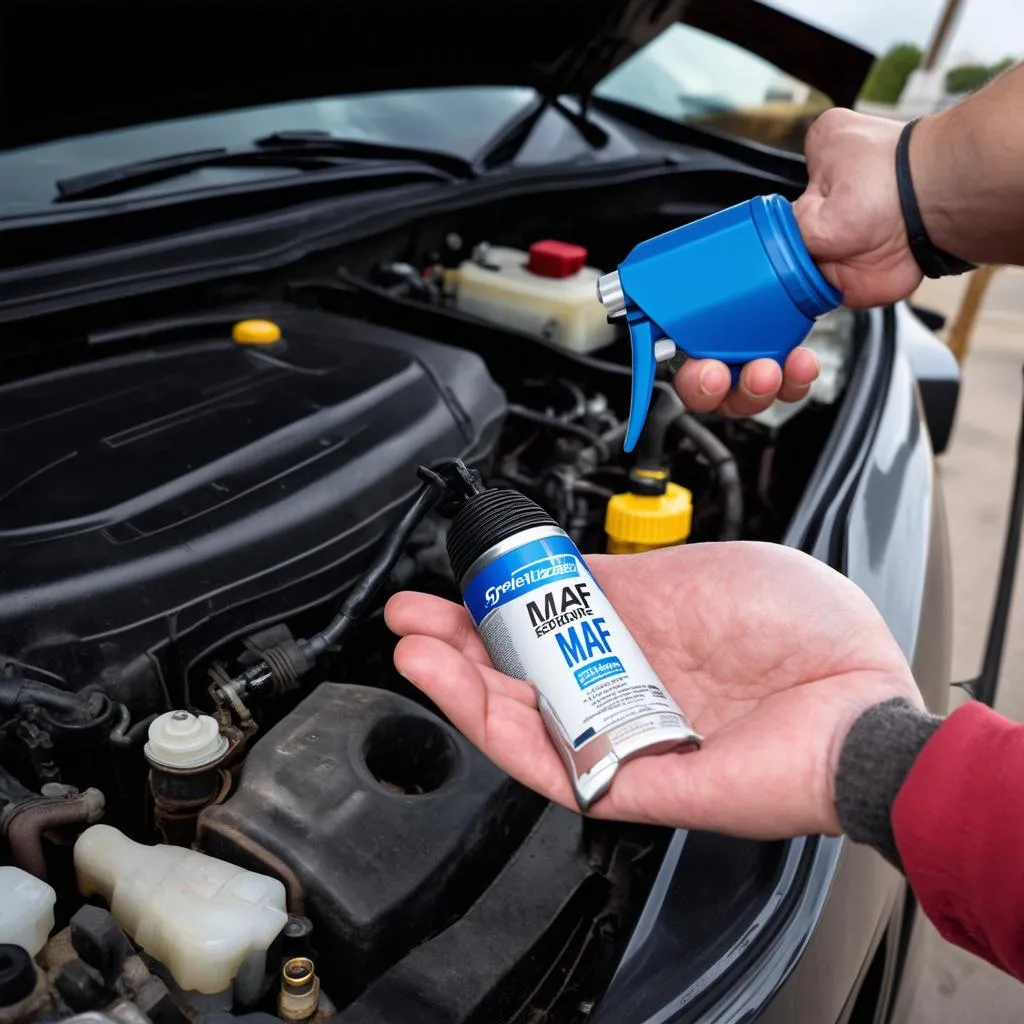The Mass Air Flow (MAF) sensor is a critical component in your vehicle’s engine management system. It measures the amount of air entering the engine, allowing the Engine Control Unit (ECU) to calculate the optimal fuel-air mixture for combustion. A faulty MAF sensor can lead to a range of performance issues, from reduced fuel economy to engine stalling.
This guide will delve into how to perform a VCDS MAF sensor test, a process that can help you diagnose a potentially problematic MAF sensor.
What is a VCDS MAF Sensor Test?
VCDS, which stands for “VAG-COM Diagnostic System,” is a powerful diagnostic software used for Volkswagen Audi Group (VAG) vehicles. It allows you to access and interact with your car’s ECU, providing valuable data and control over various systems, including the MAF sensor.
A VCDS MAF sensor test involves monitoring the sensor’s readings in real-time under different engine load conditions. By comparing these readings to manufacturer-specified values, you can determine if the sensor is operating within the expected range.
Performing a VCDS MAF Sensor Test
Here’s a step-by-step guide on how to perform a VCDS MAF sensor test:
- Connect your VCDS interface to your vehicle’s OBD-II port and to your computer. Ensure the ignition is switched on but the engine is not running.
- Launch the VCDS software and establish communication with your vehicle’s ECU.
- Select the appropriate control module for your engine. This is usually labeled as “Engine” or a similar designation.
- Navigate to the “Measuring Blocks” or “Live Data” section.
- Locate the measuring block that displays the MAF sensor readings. This is typically labeled as “MAF (Actual)” or “Air Mass Flow.”
- Start the engine and let it idle. Observe the MAF sensor readings in the selected measuring block.
- Compare the readings to the manufacturer’s specifications. You can find these specifications in your vehicle’s repair manual or online resources.
Note:
- The expected MAF sensor readings at idle will vary depending on your engine size and type.
- As you increase engine speed and load, the MAF sensor readings should increase proportionally.
Interpreting the Results
- Readings within the specified range: If the MAF sensor readings are within the manufacturer’s specified range, it suggests that the sensor is likely functioning correctly.
- Readings outside the specified range: Readings consistently outside the specified range could indicate a faulty MAF sensor. This could be due to a dirty sensor, a wiring issue, or a complete sensor failure.
- Erratic or fluctuating readings: Erratic readings, even within the specified range, can also point towards a failing MAF sensor.
“A common misconception is that a MAF sensor only needs replacing when it fails completely,” explains automotive electronics expert, Dr. Sarah Williams, author of “Automotive Sensors and Electronics.” “However, a sensor operating outside its optimal range can cause a ripple effect on engine performance and fuel efficiency.”
Cleaning the MAF Sensor
If the VCDS MAF sensor test suggests a dirty sensor, you can try cleaning it using a specialized MAF sensor cleaner. Never use harsh chemicals or compressed air, as these can damage the sensitive components of the sensor.
 Cleaning MAF Sensor
Cleaning MAF Sensor
Common Questions About VCDS MAF Sensor Tests
Here are some frequently asked questions about VCDS MAF sensor tests:
Q: Can I use a generic OBD-II scanner for a MAF sensor test?
A: While some generic OBD-II scanners can read MAF sensor data, they may not offer the same level of detail and accuracy as a dedicated diagnostic tool like VCDS.
Q: What other symptoms might indicate a faulty MAF sensor?
A: Other symptoms of a faulty MAF sensor include:
- Check Engine light illumination
- Rough idling
- Hesitation or stumbling during acceleration
- Poor fuel economy
- Black smoke from the exhaust
Q: Can I replace the MAF sensor myself?
A: Replacing a MAF sensor is a relatively straightforward procedure for those comfortable with basic car maintenance. However, it’s crucial to purchase the correct sensor for your specific vehicle make and model.
 Replacing MAF Sensor
Replacing MAF Sensor
Conclusion
The VCDS MAF sensor test is a valuable tool for diagnosing potential issues with your vehicle’s MAF sensor. By understanding how to perform and interpret the test results, you can ensure your engine runs smoothly and efficiently.
If you’re unsure about any aspect of this process, don’t hesitate to contact a qualified mechanic or visit Cardiagtech for professional diagnostic assistance and a wide range of high-quality automotive tools.
Remember, a properly functioning MAF sensor is essential for optimal engine performance, fuel efficiency, and reduced emissions.


